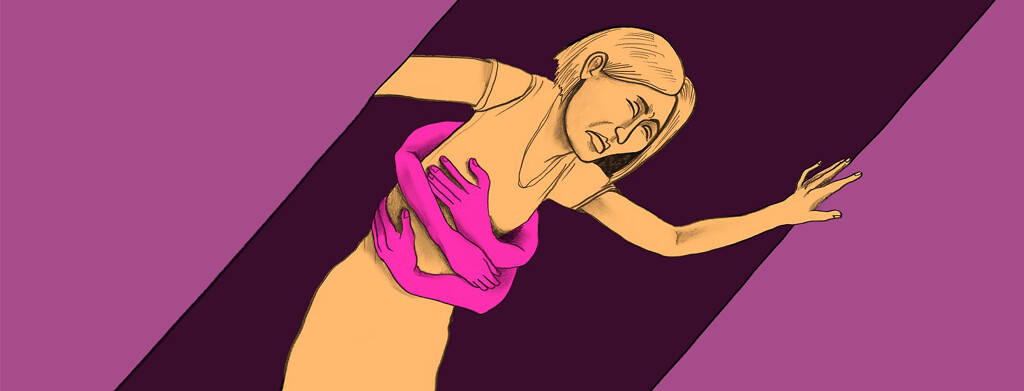What is the MS Hug?
The term MS hug is well recognized in the multiple sclerosis (MS) community. How often, long, and strong it occurs can vary. While it is often described in reference to MS, this symptom is not uncommon in the NMO community.
How is the MS hug described?
The MS hug can be different for each person. Its timing can vary too. However, it is commonly described as a squeezing or painful sensation around the chest or stomach where a hug would be. Some compare it to a tight band or restrictive sensation around the rib cage.1-3
The same type of pain also can be felt elsewhere in the body. But when it is around the torso, it is often called the MS hug. The pain is usually worse at night when trying to sleep.1-3
What causes the MS hug?
The pain or discomfort felt in the MS hug is a type of dysesthesia. Dysesthesia refers to a change in neurological sensation. It is the result of nerve damage. This damage changes the way the nerves and brain talk to one another. Unfortunately, discomfort and pain can be the result of this change in communication. This pain is called neuropathic pain. It is different from the pain we feel when we break a bone or pull a muscle.2,3
Dysesthesia can take the form of many sensations, including:2,3
- Buring
- Aching
- Itching
- Numbness
There is no specific trigger for the discomfort. This can make it a confusing and frustrating experience. In MS, the hug sensation may also be related to muscle spasms in the muscles around the rib cage. Pain is often worse at night when there are fewer distractions. The brain more easily focuses on the discomfort, leading to further frustration, anxiety, and pain.2,3
NMO and the MS hug
NMO can lead to inflammation of the spinal cord. This is called transverse myelitis. Transverse myelitis can cause widespread and severe neurological issues. Damage to the nerves as a result can lead to dysesthesia and the MS hug sensation.3
Other causes of similar discomfort
While the MS hug may be common in NMO, it is still important to consider other causes of pain. Similar discomfort can be caused by simple, mostly harmless issues. Some of these include acid reflux (GERD), anxiety, gut issues, and muscle strains. Others are more severe, like gallstones, shingles, and heart attacks.1,2
Contact your doctor or go to the emergency right away if your pain is accompanied by:4
- Pain in the arms or jaw
- Cold sweats
- Nausea
- Shortness of breath
- Dizziness
Treating the MS hug
Some people will not need treatment for the MS hug. It may come on quickly and resolve on its own. However, for those with severe or regular symptoms, there are treatment options, including:2,3
- Moving or stretching
- Heat or cold packs
- Acupuncture
- Biofeedback
- Meditation and mindfulness
- Cognitive-behavioral therapy (CBT)
- Neuropathic pain drugs (like gabapentin)
- Antidepressants (like amitriptyline)
- Anti-seizure drugs (like carbamazepine)
While people with neuropathic pain may not have seizures or depression, these drugs often have the additional effect of relieving neuropathic pain. Talk with your doctor about potential treatment options in your situation.

Join the conversation